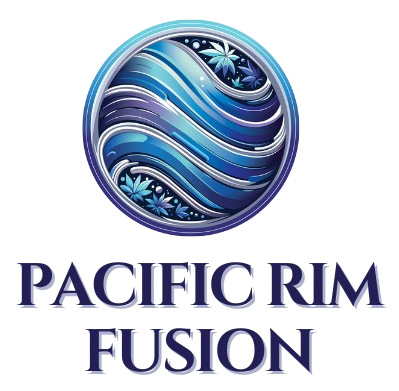I’m on a sun-baked farm in the hills, watching an old-timer named Hank roll a joint from a jar labeled “1978 Afghani #1.” The first puff tastes like history – a heritage strain with roots stretching back decades. Down in the city dispensary, customers clamor for the latest high-THC hybrid, but up here Hank and I know there’s something special about these legacy, heritage, and heirloom cultivars. They carry stories in their terpenes and wisdom in their genes.
The Roots of Cannabis Genetics
Back in the 1960s and ’70s, intrepid cannabis adventurers collected seeds from far-flung regions – from the Himalayas to Hawaii . Planted in places like Northern California and Hawaii, these landrace imports became the first heirloom strains, adapting to their new homes . They formed the foundation of modern cannabis breeding – the original stock that gave rise to the first famous hybrids and set the stage for today’s endless variety.
Hank’s Afghani #1 is one of those heirlooms. He tells me how in those days each strain had distinct character. “You could smoke Durban Poison and get a creative jazz buzz, then Afghan Indica to melt into the couch,” he laughs. Those pure sativas and indicas were unadulterated by excessive cross-breeding, so their effects were consistent and deeply rooted in place. Growers saved these seeds like family heirlooms, preserving them across generations. That’s why we call them heritage cultivars – they’re living antiques passed down with care.
The Allure of Heritage Strains
Many cannabis connoisseurs swear that these old-school strains are “better” than today’s polyhybrids. Part of that comes from the complexity of their terpene profiles and the balance of their effects. Unlike some modern buds that feel like one-dimensional THC bombs, a classic strain often provides a rich symphony of cannabinoids and terpenes working in harmony. Old-school buds might not boast 30% THC, but their high can be nuanced and long-lasting, tapping into the entourage effect that newer strains sometimes lack. Connoisseurs often cite the “unadulterated potency and complex terpene profiles” of these strains, offering a taste of history along with the high .
There’s also something deeply nostalgic at play. Lighting up a joint of Acapulco Gold isn’t just catching a buzz; it’s connecting to Woodstock-era counterculture and the legacy of growers who risked it all to share these seeds. These cultivars also serve as a benchmark for quality – the kind of clean, robust high that built the devotion of generations of smokers. As I exhale Hank’s 1978 Afghani, I feel that warmth and depth that earned these strains their devoted following.
Modern hybrids owe everything to these classics. Indeed, today’s breeders still cross these vintage genetics into new hybrids to ensure the classics continue to live on . Many of the trendiest “new” strains have a grandparent like Afghani #1 or Thai hiding in their family tree, even if the old name isn’t front and center.
Modern Breeding: Progress or Loss?
Down at the valley dispensary, a budtender scoffs when I ask if they have any Panama Red. “Nobody grows that anymore; we’ve got Gelato at 28% THC,” he says. It’s true – today’s market is dominated by hyper-potent, dessert-named hybrids. Breeders often prioritize creating new crosses, chasing ever-higher THC levels and eye-popping bag appeal . This has led to some fantastic new weed – modern buds are frosty, seedless, and hit like a freight train. But in the relentless push forward, something got left behind.
Many heirloom strains have become hard to find, sidelined because they don’t produce astronomical THC or huge yields . Decades of chasing the next big hybrid resulted in a decrease in the availability of heirloom strains . Some old-timers even claim certain highs (like the legendary clear-headed Panama Red buzz) have been lost in the hybrid frenzy. That might be nostalgia talking, but even scientists warn that modern breeding has narrowed the plant’s chemical diversity .
So is modern breeding a boon or a bane? A bit of both. On one hand, we now have strains that are disease-resistant, tailored for indoor grows, and consistently potent for an ever-expanding global market. On the other, the “authentic taste, aroma, and effects” of landrace-derived cultivars are increasingly rare treasures, captivating those who seek a connection to cannabis’s roots . As a gonzo journalist in this field, I’ve walked through corporate grow rooms that felt like sterile labs, and I’ve trekked up mountains to find old landrace fields tended by families for generations. The difference in vibe – and some say in the high – is palpable.
Cultural Significance and Economic Perspectives
There’s a rebellious satisfaction in preserving a strain that isn’t available at every slick retail shop. In an era of corporate cannabis with celebrity strains, heritage cultivars are a form of quiet resistance. They hark back to when weed was a counterculture cornerstone, not just another consumer product. And that authenticity has economic value: seeds or clones of true heirloom strains can fetch a premium among growers and collectors.
In today’s legal market, a few dedicated breeders and nonprofits are working to preserve these genetic legacies. Seeds or clones of genuine heirloom strains command high prices precisely because they’re rare and authentic. As legalization spreads globally, there’s growing interest in reviving these classics – from Thai sticks in Thailand to old Afghan indicas in the Kush mountains. Regions that once cultivated landraces are now looking to preserve them as part of their heritage, resisting the flood of cookie-cutter hybrids.
From an industry perspective, there’s a compelling case for maintaining these varieties: genetic diversity is key to the future. These heirlooms could hold disease-resistance genes or unique cannabinoids that might prove medically important. In economic terms, today’s novelty could become tomorrow’s staple.
Keeping the Legacy Alive
As the sun sets on Hank’s farm, we spark one last joint of his pure heirloom bud. The flavor is sublime and the effect hits that sweet spot of old-school depth and satisfaction. It strikes me that the future of cannabis doesn’t have to choose between legacy and innovation. The two can coexist side by side.
The renewed appreciation for legacy, heritage, and heirloom cultivars reminds us that sometimes, the old ways are worth preserving. These strains are time capsules of counterculture and tradition, carrying whispers of distant mountains and equatorial sunshine. In true gonzo fashion, I’ll argue that smoking a bowl of a true heirloom isn’t just getting high – it’s an act of communion with generations of growers and tokers who kept the plant’s spirit alive. And in an age of corporate cannabis, that’s downright revolutionary.



